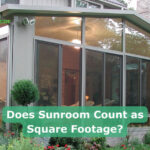Sunrooms and conservatories: two terms often used interchangeably in the UK, leading to a common misconception that they are one and the same. In reality, these structures are distinct in their design, materials, and functionality.
This comprehensive guide aims to demystify the confusion and shed light on the unique features that set British sunrooms apart from conservatories.
What Do the British Call a Sunroom?
The British, in their architectural lexicon, refer to a sunroom as a structure designed to capture the sun’s rays, providing a serene space for homeowners to bask in the warmth of natural light. While the terms “sunroom” and “conservatory” are often used interchangeably, it’s crucial to understand the subtle yet significant differences between these additions.
Length of Use: Sunrooms Embrace Year-round Comfort
One of the primary distinctions lies in the length of use. Conservatories are renowned for their seasonality, offering comfort during certain times of the year. In winter, conservatories can become uncomfortably cold, while in summer, they may transform into heat traps due to extensive sun exposure.
On the contrary, sunrooms stand out as versatile living spaces, providing comfort from March until early October. The design of sunrooms ensures a more balanced and consistent temperature, allowing homeowners to enjoy the space throughout much of the year.
Materials: Glass Dominance in Sunroom Elegance
The choice of materials further sets sunrooms and conservatories apart. Conservatories often feature a combination of UPVC, glass windows, and sometimes a brick base. The glass coverage typically extends to the top half of the structure.
Sunrooms, in contrast, boast elegance in simplicity. These structures are predominantly crafted from glass, from the door panels to the roof. The solid glass roof of a sunroom not only enhances aesthetics but also provides superior protection from the sun, ensuring a comfortable and well-lit environment.
Consent & Speed of Assembly
Navigating the bureaucratic maze of planning permission is a consideration for both sunrooms and conservatories, especially for larger structures. However, an advantageous option for homeowners is the availability of ready-built structures that mitigate the need for extensive planning permissions.
Sunrooms, with their predominantly glass composition, often enjoy a smoother planning permission process. The significant advantage, though, lies in the rapid assembly of sunrooms. A typical veranda can be installed within 1-2 days, while a garden room may take 3-4 working days, offering a swift transformation without prolonged disruptions.
In the deliberation between a sunroom and a conservatory, the unique features of sunrooms emerge as compelling reasons to lean towards this exquisite addition. The ability to use a sunroom year-round, its predominantly glass composition for a sophisticated aesthetic, and the streamlined assembly process make it a standout choice for British homeowners.
Conclusion
While the terminology may cause confusion, the distinct characteristics of British sunrooms make them a preferred choice for those seeking a harmonious blend of elegance and functionality in their living spaces. Whether you’re envisioning a year-round retreat or a swift transformation, a sunroom stands as a testament to British architectural finesse.



